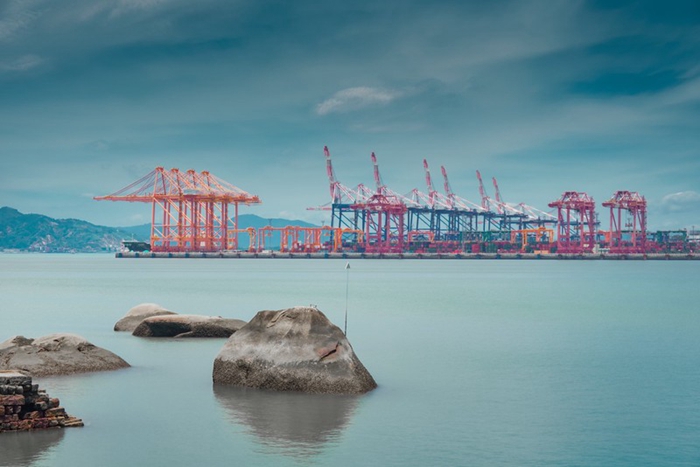
A view of Xiamen Port's container ships and gantry cranes. [Photo/IC photo]
Xiamen Port – located in the city of Xiamen, in East China's Fujian province – is really beefing up its efforts to introduce the application of low-carbon and zero-carbon equipment, facilities and energy-saving and efficient technologies.
The port authorities want to increase the supply of clean and low-carbon energy, to boost the carbon sink capacity within its ecosystem.
Last November, the Xiamen Port authority issued an action plan for the low-carbon development of the port – the first of its kind to be released and implemented by a local industry regulator in China's ports and shipping sector.
The action plan sets out the long-term goal of building a near-zero carbon port and a low-carbon shipping system comprehensively.
Under the plan, by 2030 the low-carbon development model in the ports and shipping industry will be basically formed – and a clean, low-carbon, safe, efficient and diversified new energy system will be established.
At that stage, the low-carbon development of Xiamen Port's ports and shipping industry will reach the international advanced level.
Containers are the main freight delivery unit at Xiamen Port, which last year handled 12.43 million twenty-foot equivalent units, or TEUs, ranking it seventh in China.
What's more, the facility aims to complete the construction of three fully electric container terminals for major loading and unloading equipment by 2025.
An official of the Xiamen Port authority said the port is planning to have more than 60 percent of new and clean energy flat transportation equipment for containers by 2025.
Moreover, the authorities will move to complete the pilot construction of three fully electrified container terminals for main loading and unloading equipment.
On top of that, they are aiming to create two demonstration zones for containers in the Haicang and Xiang'an port areas that will have near-zero carbon emissions by 2030.